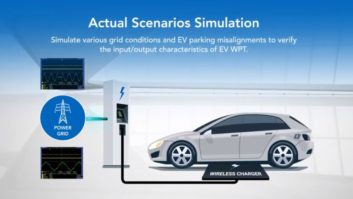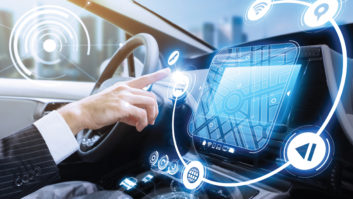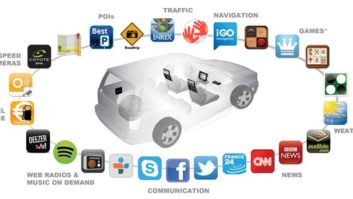During 2024, passengers took more than 4 million fully autonomous rides in Waymo self-driving cars. If you haven’t seen one of these almost sci-fi vehicles, it’s probably because you haven’t recently been to San Francisco, Los Angeles, Phoenix or Austin. But make no mistake: It’s only a matter of time before one shows up on your ride-sharing app or even in your own driveway.
Since about half of all radio listening happens in the car, the implications for the industry are obvious. This is either a golden opportunity to grow share or a chance to watch broadcast radio drive off into the sunset.

Understanding how autonomous vehicles (AVs) will change radio means watching the tech reshape the car itself. You’ve got wireless access in vehicular environments (WAVE); cellular vehicle-to-everything (C-V2X); vehicular ad hoc networks (VANETs); and new in-car entertainment platforms. Even regulations could determine which audio services stay in the game.
Think about it: AVs will transform how passengers consume media. Freed from driving, occupants will demand personalized, immersive in-car entertainment — far beyond metadata. Audio could be enhanced with visuals, live audience engagement, transcriptions, voice-controlled song requests, interactive maps, chat groups, news, traffic updates and more. Not to mention location-based advertising, a huge opportunity for broadcasters.
Fortunately, some major players aren’t sitting on the sidelines. iHeart led the way in 2023 with in-car integrations, though some of those early ventures have already run their course.
Meanwhile, Xperi is making major moves with DTS AutoStage, now in 10 million vehicles in 146 countries, including millions in North America. They’ve partnered with companies like Cumulus, Cox and Beasley to bring terrestrial radio into the connected dashboard.
TomTom’s Digital Cockpit also lets drivers access terrestrial radio, streaming, podcasts and audiobooks directly from the car’s system.
But they’re not the only ones eyeing the dashboard. Google’s Android Automotive OS already lives in a growing number of vehicles, while Apple’s next-gen CarPlay is set to take over dashboards soon. This is shaping up to be a model-to-model battle of the cars, which will drive innovation but could also make development costly and fragmented. And the recently published “2025 In-Vehicle Visuals Report” from Quu reinforces the importance to radio of all these trends (learn more about it in Radio World’s latest ebook).
Of course, in theory, legislation could level the playing field by requiring not just AM but also FM and HD in all new vehicles. But whether even AM reception will be mandated by Congress remains uncertain.
One thing is clear: The job of every radio station in America is to stay relevant to local listeners. Without that, broadcast radio won’t even be in the backseat and will too easily be left at the curb.







